Review for Fullmetal Alchemist: Brotherhood - Part 3 (2 Discs)
Introduction
2010, and Manga Entertainment released the Fullmetal Alchemist Brotherhood series to the UK on DVD and Blu-ray. That was in an ideal universe, in our universe, the Blu-ray release of the series stalled after volume 2, and was indefinitely postponed (well, cancelled) thereafter. I was a DVD snob in 2010, hadn’t yet upgraded to HD and thought that DVD was good enough. We even had it better than the US, in that we have PAL DVD with 576i lines of resolution, while they only have 480i lines of resolution. When I read the specs on Fullmetal Alchemist Brotherhood, and learned that it was animated at 540p resolution (in NTSC world anything over 480 is considered an HD resolution) and scaled up to 1080p for the Blu-ray, I was quick to do the maths. 540<576, so a PAL DVD would show Brotherhood at its best at better than the original animated resolution. I was happy with just getting Brotherhood on DVD here, and didn’t think the latter Blu-rays too much of a loss.
Then in 2011 I finally got a Blu-ray player, and started watching anime in high definition. It wasn’t long before Blu-ray spoiled me for anime on DVD. You’re now looking at a Blu-ray snob. Five years ago we used to get anime in the UK as NTSC-PAL, a 30fps 480 line source made to conform to a 25fps 576 line format which was the worst of both worlds. We’ve since moved to native PAL (all but the first FMA:B releases were native PAL), which presents the material at the full 576 line resolution, but played back at 25 frames per second, which speeds everything up by 4%, including the audio. I never used to notice this until I started watching Blu-ray. Now I notice higher pitched audio, but not as much as I discern pitch corrected audio, which I never used to notice before.
US NTSC is a whole other matter, lower resolution at 480i, but at least played back at the correct speed in terms of audio, even if it means using 2:3 pulldown to get 24 progressive frames per second to fit a 30fps interlaced format. That results in juddery playback with the animation afflicted by combing and interlacing artefacts. It isn’t pretty. Most big studio releases encode their discs progressively, so that compatible DVD players can back convert the video to 24 progressive frames per second, resulting in smooth playback once more. Anime discs are almost never given progressive encodes; they are all ugly interlaced things.
I am so ready to watch Fullmetal Alchemist Brotherhood now the way that it is ‘meant’ to be seen, on Blu-ray. I haven’t seen the first two volumes as yet, but in the intervening years three things have happened. The price of replicating Blu-ray discs has come down, the minimum production run has been reduced, and more anime fans now own HD kit. Manga Entertainment can afford to finish what they have started, and over the next three months, they’ll be releasing the final three Blu-ray collections of Fullmetal Alchemist Brotherhood. I’m beginning my HD Brotherhood trip in the middle, with volume 3. Since the episodes are the same, I’ll be cutting and pasting in italics the relevant sections from the DVD review.
Alchemy is the art of the transmutation of matter by means of an incantation, a mystical circle, or sheer willpower alone. For centuries charlatans and the deluded pursued the creation of gold by alchemical means but to no avail. But in Full Metal Alchemist, alchemy is a realised science. Set in an alternative world during the early years of the twentieth century, the transmutation of elements is indeed a reality, and the state regards such talent highly indeed. Full Metal Alchemist tells the story of brothers Edward and Alphonse Elric, two precocious alchemists who are on a quest. The young brothers had attempted the unspeakable, resurrecting their mother. But the Law Of Equivalent Exchange cannot be flouted, only objects of equal mass can be transmuted, and the dead cannot be brought back to life. The attempt failed disastrously. Now, Alphonse is a disembodied spirit bound to a suit of animated armour, while Edward has replaced his leg and arm with metal automail, but it’s his prodigious facility with alchemy that has earned him the name, Fullmetal Alchemist. Now they search for a means to restore their bodies.
This third collection of Fullmetal Alchemist Brotherhood comes with 13 episodes across 2 discs from Manga Entertainment.
In the previous collection of episodes, Edward and Alphonse Elric continued their quest to restore their bodies, but it’s a quest that takes them into the heart of a dark and sinister conspiracy that is corrupting the heart of their nation. The Philosopher’s Stone that they seek has a history of bloodshed behind it, yet it promises immortality itself to those who dare reach for it. New arrivals from the nation of Xing want that immortality, and Ed and Al ran into a determined prince named Ling Yao, and his retinue of bodyguards. At the same time, a little practitioner of alkahestry (The Xinghese version of alchemy) named May Chang ran into Scar. But as they continue their quest, it steps too close to the plans of the enigmatic Father and the homunculi. The homunculi strike back in the worst way possible. Gluttony, true to his name reveals an infinite appetite. At the end of the previous collection, Edward, Ling Yao, and the homunculus Envy were trapped in an infinite void deep in Gluttony’s stomach. The story continues…
Disc 1
27. Interlude Party
28. Father
29. Struggle of the Fool
30. The Ishvalan War of Extermination
31. The 520 Cens Promise
32. The Fuhrer’s Son
33. The Northern Wall of Briggs
34. Ice Queen
35. The Shape of This Country
Disc 2
36. Family Portrait.
37. The First Homunculus
38. Conflict at Baschool
39. Daydream
Picture
Resolution isn’t everything. I learned that the day I watched Black Lagoon on Blu-ray. That was a show that was animated at SD resolutions, yet when up-scaled to HD, the work that the studios did to make it look as good as possible is astounding. Fullmetal Alchemist was animated at higher than SD resolution, but not by much. It still takes a bit of up-scaling to get it to fit a 1080p resolution on this Blu-ray disc. Theoretically we should get all the detail that we see on this Blu-ray, on the PAL DVD as well. That is in theory; in practice this Blu-ray image blows that DVD out of the water.
This 1.78:1 widescreen transfer at 1080p reproduces all the detail that is on the DVDs, but exhibits none of the compression that the lesser format has. A DVD has to squeeze its data to make it fit, lines will be afflicted by aliasing, large areas of colour will be prone to posterisation, and motion will introduce artefacts like mosquito noise. Pause a Fullmetal Alchemist Brotherhood DVD during an action sequence, and you’ll see that the picture will have broken up to the point of pixellation. Freeze the Blu-ray at that point and you will have a perfect still frame. We don’t normally notice the flaws in DVD playback that much, as our eyes skip over the details during playback. 24 frames per second is fast enough to average the artefacts out.
Having no visible compression on the Blu-ray effectively means that it does increase the detail levels; the extra resolution does make a difference. Larger areas of colour have depth and gradation to them, fine detail isn’t lost during playback because of compression, and line art never suffers from aliasing (Unless you get up close to the screen, where you will see the inevitable signs of up-scaling). What’s more, played back at 24 progressive frames per second, instead of 25 (or indeed 30) interlaced frames, we see the animation at its best, clear and sharp, smooth and free of judder. That the Blu-ray format allows for far greater colour depth is just the icing on the cake. The imagery looks more vibrant, lush, and engaging. On the DVD, we have a series of imperfect frames, averaged out during playback to make something watchable. On the Blu-ray, every frame is perfect, and the overall experience is enhanced as a result. The only minor flaw is some digital banding around light sources in dark areas. I noticed this most after episode 35, in the tunnel under Briggs, when a lantern was being swung in the darkness.
The images in this review are sourced from the PR, and aren’t necessarily representative of the final retail release.
Sound
You have the choice between Dolby TrueHD 5.1 Surround English, and Dolby True HD 2.0 Stereo Japanese. The English track will play back with the signs track locked on, while the Japanese audio has the translated subtitles locked during playback. This is the one sticking point where the DVDs have an advantage over the Blu-rays, as their subtitles are optional. It’s a price we have to pay to get the show on Blu-ray. In Japan, where Blu-rays are more expensive and with fewer episodes, but in the same region as the US where these discs were originally authored, they would much rather that Japanese fans buy domestic, rather than opt for the comparative bargain of importing. One way of doing that is by marring the Japanese option with needless subtitles. Of course with us being in Region B, we technically don’t need the subtitles locked, but we have to live with the legacy of Funimation’s authoring. One thing, Funimation opted for a thin white font for their subtitles on the Blu-rays, and in comparison to the usual yellow text on the DVDs, it is not quite as easy to read.
Having seen the show three times now, twice on DVD, I decided to do things a little differently this time. I watched half the episodes in Japanese, and half in English, my first real exposure to Vic Mignogna in his signature anime voice-over role of Edward Elric. I have to admit that the English dub is certainly watchable. Having lived with Japanese FMA ever since the first series, it did feel a little weird hearing a different language from familiar faces, with a couple of odd sounding voices for certain characters, but the quality of the dub is strong, and pretty soon I was switching between the two versions without noticing much difference. The English voice cast do capture the characters in much the same way as the Japanese voice cast create them, but never once does the show sound like a copy of the Japanese version. While the Japanese stereo is strong, particularly when pro-logicked up, the English surround track gives the show a little more space, particularly during the action sequences. The quality of the audio isn’t immediately all that different from that on the DVDs, but at certain points during the episodes, particularly during more strident moments, the added fidelity and clarity of lossless audio becomes clear, the audio is richer, and much more defined. I was struck at hearing instruments in background music that I hadn’t been able to discern on the DVD. It’s a more subtle improvement, but it is definitely there.
Extras
Disc 1’s sole extra feature is an audio commentary to accompany episode 28. ADR Director (and voice of Havoc) Mike McFarland hosts Wendy Powell (Envy), and Kent Williams (Father and Narrator). Following prior precedent, the commentary focuses mostly on the differences between the two versions of Fullmetal Alchemist, and it’s another interesting, actor-focused commentary. There are also a couple of minor spoilers within, so be warned.
Disc 2 gets the textless credit sequences. (Song subtitles aren’t locked here)
You’ll also find a commentary here that accompanies episode 36. Mike McFarland this time has J. Michael Tatum (Scar), Stephanie Young (Olivier Armstrong), and Phil Parsons (Buccaneer) in the booth to chat about their characters. There’s also an interesting look at the set-up of Fort Briggs, and how these characters are mavericks compared to the military in Central.
Conclusion
I still prefer the first series if you’re asking, but the more I watch of Fullmetal Alchemist Brotherhood, the finer a distinction it becomes. I could talk about all the things that I believe the first series did better, whether it’s the characterisation, or the emotional strength, but with this third instalment of Brotherhood, I finally have to admit one thing. When it comes to sheer storytelling excellence, when it comes to pacing, when it comes to holding the viewers’ attention, and when it comes to the simple ability to spin a yarn, Fullmetal Alchemist Brotherhood wins hands down. If you start watching episode 27, you will be hooked like fish on the end of a line right up until episode 39, and the only reason that it will let you go, is that you’ll have to wait for part 4 to be released before it will reel you back in. Fullmetal Alchemist Brotherhood is the finest story being released in anime form right now, and if you aren’t tuned into this series, you really are missing out on something spectacular.
It’s also hard to describe just how the plot twists and turns, how the characters are thrown sudden reversals, and are led on emotional roller coasters by the various turns of events, without actually just relating what happens. When that kind of effort is required, it’s easier, and wiser just to tell you to watch the thing and experience its breathless brilliance for yourself. It starts off so un-inspiringly as well with a recap episode. Of course with a show as long and as complex as this one, it’s useful to have a reminder of what is going on. It’s the way that an anime handles a recap that really defines it. The usual show, like Chobits or Wolf’s Rain will have recap episodes that do just that, tell you in brief what has happened so far. The inventive series, like Samurai Champloo for instance, turn the concept on its head, and plays with and has fun with it. Fullmetal Alchemist: Brotherhood takes a difficult path, in that it uses its recap episode to develop its characters, or in this case, one character Hohenheim Elric. In that respect, it’s a recap episode with a lot of new animation, in that it also recaps events that we haven’t seen yet. Hohenheim tries to reconcile his position in the world, with the events that are happening in Amestris, and what his sons are going through. It’s the story of a man trying to reconnect with his humanity, and as such is gripping stuff. And I reiterate, it’s a recap episode.
It also serves to prolong the cliff-hanger agony between Ed, Ling, and Envy being swallowed up by Gluttony, and the resolution of that arc. Of course waiting an extra week for a broadcast was annoying. Having to wait a couple of months for a DVD release is agonising in itself, to the point where sticking a recap episode at the head of the disc really doesn’t make much difference. But the conclusion of that arc, the confrontation with Father, the grand architect of what is going on in Amestris is a game changing event when it comes to the story. The homunculi were intimidating enough as foes, seemingly immortal and invulnerable, as well as capable of all sorts of manipulations behind the scenes. But when Mustang faced off against Lust in the previous collection, they were shown to be beatable. Father is on a whole other level, the progenitor of the homunculi, of indeterminate age, and somehow able to control alchemy within the nation, able to disarm his foes with a thought. Even then, he’s immune to the effects of alchemy to the point where Scar’s attack doesn’t even affect him. It’s around this point in the story that it becomes clear to Ed and Al just how high up the chain the corruption goes, and just how much at the mercy of the conspiracy they are. There is also the question of why Father looks so much like Hohenheim. We also learn just how homunculi are created when Ling is offered a choice, offered that immortality that he so desires for his country, and quite naturally he takes it.
These turns of events would be absolutely dispiriting, were it not for the occasional glimmer of hope. It appears that those homunculi created from humans may still hold onto some semblance of humanity. Certainly Ed sees something of Ling in the new Greed, while some of the Fuhrer’s actions can be a little unexpected. Ed and Al also take hope in the fact that where Father had complete control over their alchemy, he didn’t control Scar’s powers, or May Chang’s alkahestry. That also offers them some hope. But they also learn that if they are going to pursue these thin possibilities, they will have to be circumspect indeed, as by revealing himself and his power so openly, Father also reveals just how much power he has over his foes. It looks as if Roy Mustang is neutered when his loyal men are transferred around the country, and his trusted Lieutenant Hawkeye is assigned directly to the Fuhrer. They are effectively hostages against him, the same way that the Fuhrer somewhat indelicately threatens Winry when putting the Elric brothers in their places.
It’s why Ed and Al ostensibly return to their quest of restoring their bodies. It’s a journey that the conspirators don’t object to, and the brothers cite their interest in alkahestry as an unexplored aspect of medical alchemy. Of course it isn’t lost on anyone that alkahestry is something outside of Father’s control, and they still keep a short leash on the brothers. The journey takes them North, to the icy wastes of Fort Briggs, and if you hadn’t realised that the show was fundamentally different from the first Fullmetal Alchemist series, meeting Alex Armstrong’s big sister, and exploring the dynamics of Briggs soldiers will underline that. It really is a completely different story, and the characters that we meet are rich and varied. We also meet the final two homunculi in this instalment, and while Sloth is a little disappointing, his arrival does lead to one of the show’s more entertaining action sequences. Of course there’s no way that Sloth in this series could match up to who Sloth turned out to be in the first series, but that’s made up when we learn the identity of Pride, a more chilling and unexpected character you couldn’t imagine.
Fullmetal Alchemist Brotherhood delivers another two discs of captivating story, appealing characters, and top-notch animation. Its dynamic, energetic, back and forth narrative always delivers the unexpected and it takes the breath away with the audacity with which it tells its story. It’s also rich in complexity, balancing ridiculous comedy with darkness and bleak extremes that can feel like a kick to the gut. This show is definitely Manga’s jewel in the crown, and it really ought to be in every anime fan’s collection, right next to the first series.
Do you like your Brotherhood DVDs? Have you watched them, and re-watched them, enjoyed and indeed fallen in love with the show? Are you happy with the image quality and the audio, pleased enough with the extras? Then do not, under any circumstances watch the Blu-rays! Let’s face it; if the DVD is all you have seen, then it will probably be good enough. The image quality on those discs is strong, the authoring acceptable, and there are no glitches or drops in quality to complain about. I thought the DVDs were great, until I watched this Blu-ray collection. It’s like comparing night to day. It may be animated at less than PAL resolution, but it up-scales a treat on the Blu-ray, the compression free image is pristine, the progressive, native 24fps playback shows the animation at its best, the colours are rich and vivid, and the audio has greater fidelity here. Once you watch Fullmetal Alchemist Brotherhood on Blu-ray, you won’t be able to watch it on DVD again!
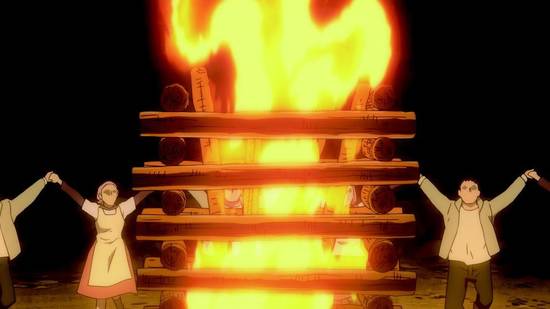
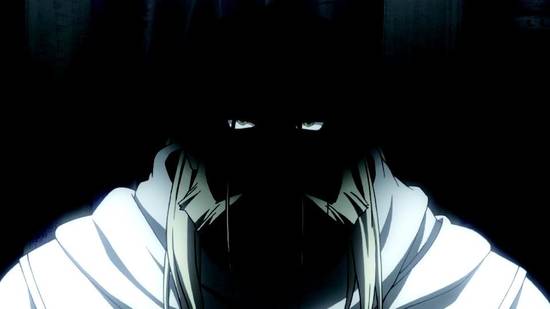
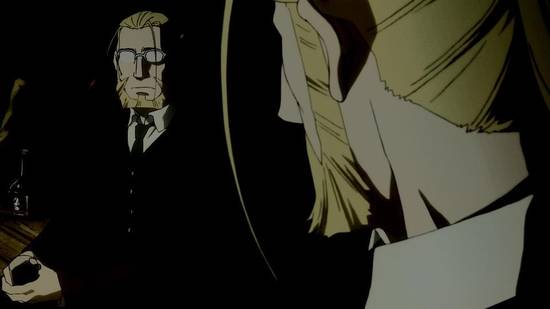
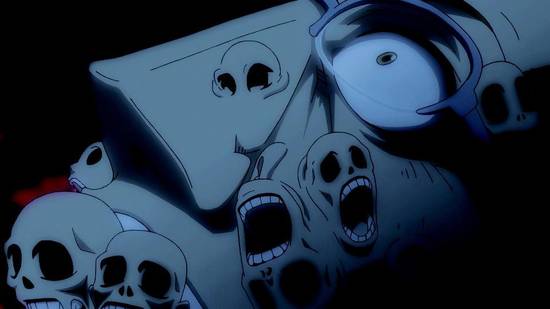
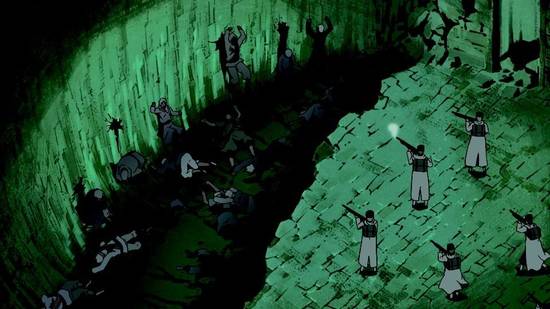
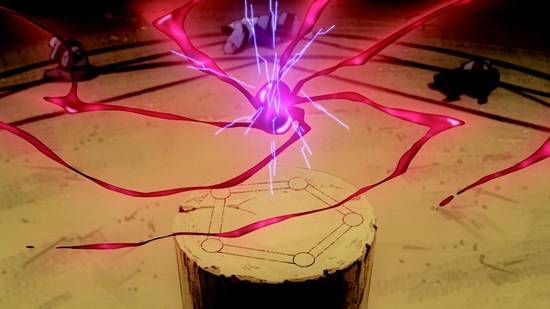
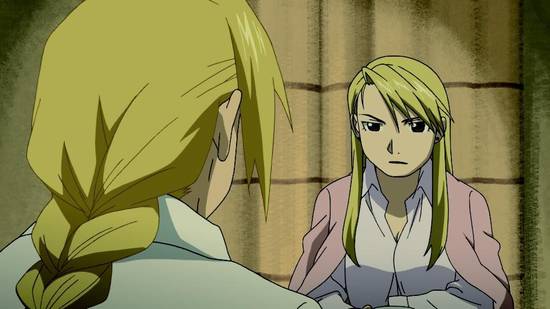

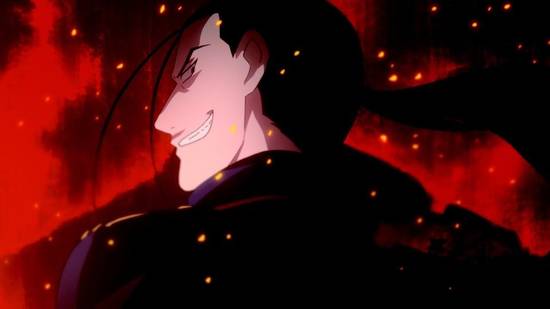
Your Opinions and Comments
Be the first to post a comment!